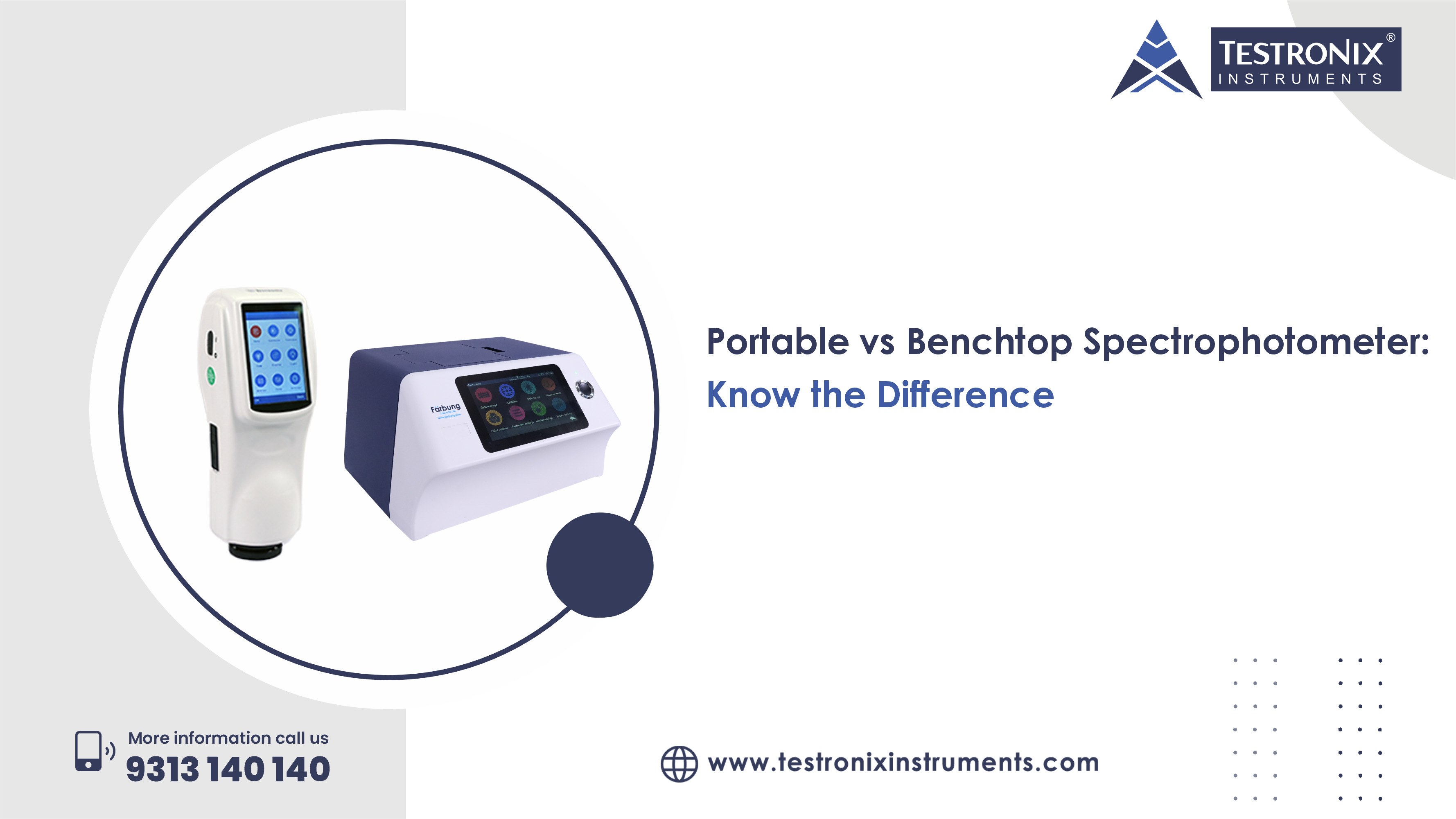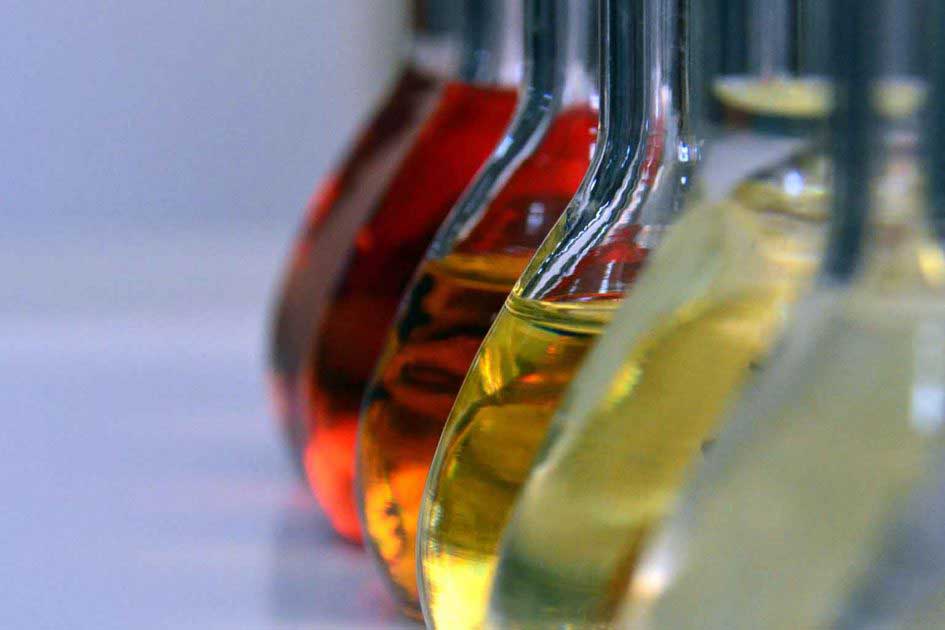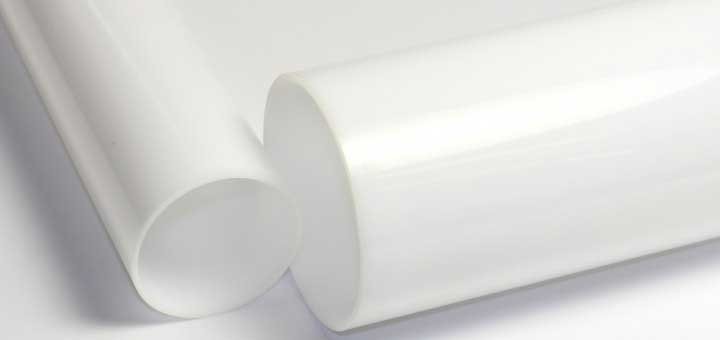A spectrophotometer is a scientific instrument that quantifies the amount of light absorbed or transmitted by a solution at any specific wavelength. Spectrophotometers are used in qualitative and quantitative analysis of chemical materials. Spectrophotometers are also commonly used in laboratory and research settings in fields like chemistry, biology, physics, and materials science.
They are used for a range of activities including enzyme activity, DNA/RNA quantification, color analysis, and quality control in manufacturing. A modern-day spectrophotometer can measure across multiple ranges of the electromagnetic spectrum (UV, visible, infrared) depending on the analysis conducted.
The Concept of Portable Spectrophotometer
A portable spectrophotometer is a small, handheld tool that is used to measure the absorption or reflectance of light in order to describe the optical characteristics of a sample outside the laboratory. It is also founded on the same basic science as larger benchtop spectrophotometers, which is principally based on the Beer-Lambert law.
Benefits and Limitations of Portable Spectrophotometer
Portable Spectrophotometers provide advantages like portability, the ability to analyze on-site and usability for the user which makes it suitable for fieldwork, quality assurance, and speeding up decisions.
Benefits:-
-
Portability - Small and lightweight it can be moved and used in factories, and any other place you have quality concerns, including out in the field.
-
On-site measurements - Measure in the field or on the line without sending samples to a lab.
-
Speed - Provides quick results sometimes in seconds to facilitate rapid decisions in high-stakes situations such as forensic science or customs clearance.
-
Ease of use: Often designed for lay use and ease of use, intuitive for even non-technical users.
-
Non-destructive testing: It is capable of conducting non-contact measurements when testing through packaging like plastic or glass without damaging the sample.
Limitations:-
-
Accuracy and sensitivity: The accuracy and sensitivity of sensors may not match those of the high-end stationary bench models.
-
Wavelength range: Many instruments will have a reduced spectral range to be able to conduct proper analysis.
-
Environmental: The performance of the sensor can be affected by outside forces such as temperature and light.
-
Sample contamination: There will be greater potential for contamination of the sample versus fieldwork.
-
Quantification: In some field applications, quantification of results may still be a challenging process.
The Concept of Benchtop Spectrophotometer
A benchtop spectrophotometer is a fixed, precision laboratory instrument that measures the interaction of a sample with light. Benchtop spectrophotometers are used to obtain the most precise measurements and are therefore excellent tools for laboratory analysis, quality control, and color formulations across industries.
The spectrophotometer operates under the Beer-Lambert Law which states that the absorbance of light by some specific substance correlates directly with the concentration and path length of light through the sample.
Benefits and Limitations of Benchtop Spectrophotometer
Benchtop spectrophotometers provide advantages such as precise accuracy, consistency, and broad flexibility for in-depth color and spectral analysis in a stable laboratory environment, although they are non-portable, more expensive, and require a controlled laboratory environment.
Benefits: -
-
Precise Accuracy and Consistency: Benchtop versions give better accuracy and stability. Consistent results are imperative for work under stricter tolerances and for precise color matches.
-
Flexibility: Many kinds of samples can be measured with bench top spectrophotometers which include solids, liquids, and powders. Most bench top spectrophotometers will offer multiple measurement modes (for example, transmittance and reflectance) in a standard fashion.
-
Advanced Features: A lot of bench top spectrophotometers now have useful features like adjustable apertures and extra observer angles. A few of the quality control spectrophotometers can even analyze defects like hazes, and some even include a backing to reduce errors.
-
Data Analysis: The data from benchtop spectrophotometers could also be sent to a computer for data analysis, which may include report writing or data analysis if incorporated into a Laboratory Information Management System (LIMS).
Limitations:-
-
Not Portable - They are bulky and heavy, due to their size, they would remain at a plug-in for a fixed place, and they cannot be used for measuring on-site or in the field.
-
Costly - Benchtop spectrophotometers are frequently much higher-priced than portable spectrophotometers primarily due to benchtop spectrophotometers being usually more complicated and/or having more advanced optics or instrumentation.
-
Needs a Controlled Environment - Benchtops must be set up and run in a lab environment, which may not be feasible for all intended uses.
-
Operator Skill Required - Operating and understanding the results generated from a benchtop spectrophotometer requires expertise and an understanding of how to apply the science behind spectrophotometry.
Portable vs Benchtop Spectrophotometer
This table displays a comparison of portable and benchtop spectrophotometers with reference to some of the following factors: mobility, accuracy, types of samples, better price points, and typical uses.
Here are the key differences described:
|
Feature |
Portable Spectrophotometer |
Benchtop Spectrophotometer |
|
Mobility |
Compact, lightweight, and portable, running on batteries for convenience. Perfect for field use, on a factory floor, or for quick quality control inspections. |
Large, bulky, and benchtop, needing dedicated laboratory space and consistent electric power. It is not suitable for uses outside of a controlled laboratory environment. |
|
Accuracy & Precision |
Satisfactory, but ultimately less accurate than a benchtop model due to its smaller size and susceptibility to measurement considerations of the environment. |
Very high to exceptional accuracy, repeatability, and reproducibility. They are designed for tight tolerances and sensitivity measures in a stable environment. |
|
Sample Versatility |
Generally built for a designated application or sample type, such as solid or flat surfaces. Certain models can measure liquids with specific accessories. |
Very flexible and can measure broader types of samples including solids and liquids, powders, and gels. It can measure reflectance and transmission. |
|
Measurement Spot Size |
Commonly, smaller measurement spot sizes are used, which may be influenced by surface imperfections. |
Often, there will be a larger measurement spot size which will help to average out the imperfections and provide data that is more representative of the actual data for textured or patterned samples. |
|
Cost |
More affordable at the moment of the purchase, and for maintenance, than high-end benchtop instruments. |
More expensive due to high-precision components and broader capabilities. Maintenance and service contracts are also factors that contribute to the long-term cost. |
|
Ease of use |
Intended for ease of use; equipped for operation by technicians or non-technical users with little formal training. |
Intended for use by users with significant technical knowledge, such as laboratory staff or research scientists. |
|
Durability |
Sturdy, with a design accommodating tough field applications. |
Designed for delicate, controlled laboratory environments, rendering them more sensitive to vibrations, shocks, and other influences. |
|
Primary use |
Fieldwork, production line spot-checking, on-site quality control and testing in remote locations. |
Research and development, high-end quality control, color formulation and master color standards, processed in a laboratory. |
Conclusion: Portable vs Benchtop Spectrophotometer
The decision between a portable or benchtop spectrophotometer is based on the work you will be doing. If you are performing inspections in the field, doing minor measurements, and/or moving the instrument often, the portability and usability of a portable spectrophotometer may be your best choice. If you want extreme accuracy in research and measurement, or perform spectral analysis, or operate in a laboratory setting, a benchtop is the better spectrophotometer to meet your needs.
In general, both are used in industry; portable spectrophotometer models are often used for field measurement, while benchtop models are used when laboratory measurements are needed for deeper analysis and investigation. Both instruments allow for accurate and efficient measurements throughout each step of the process, within and between industries.






